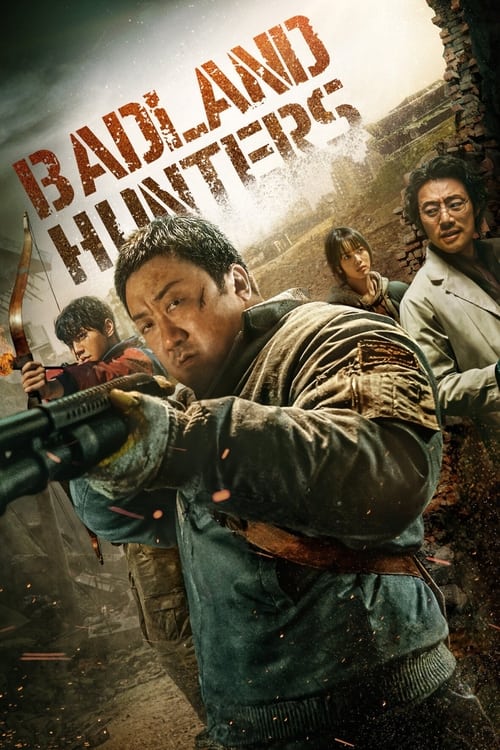Badland Hunters – Film Review
Published January 31, 2024

Badland Hunters brings director Heo Myung-haeng‘s apocalyptic world to life in his ambitious directorial debut. His foray into the film world proves effective in illustrating the grotesque desperation that takes root after society crumbles, crafting a riveting but slightly flawed action thriller.
Heo’s follow-up to Concrete Utopia furthers its dystopian narrative, examining what happens when civilization becomes a barren wasteland. He depicts a grim portrait of life post-apocalypse, invoking potent images of lawlessness, strife, and degradation in the remnants of what once was Seoul. The movie could have fallen into cliched storytelling with such a setup, but it transcends expectation with its intricate plot twists, unique South Korean influences, and thoughtful character development.
The protagonist, Nam San, portrayed by Ma Dong-seok, exhibits tremendous determination as he battles through countless threats. Dong-seok captures the spirit of an embittered survivor wrestling with hopelessness and resurgent hope, making him a captivating protagonist.
As his comrade-in-arms, Lee Jun-young (as Choi Ji-wan) offers solid support. Their shared trauma from the catastrophe binds them in a poignant display of camaraderie amidst turmoil. They inject emotional gravitas to the heart-wrenching plot, propelling the movie forward.
Meanwhile, Lee Hee-joon embodies the dark underbelly of survival as the villainous Dr. Yang Gi-su. His transformation from doctor to cruel scientist explores the perils of unchecked ambition, and the narrative sheds light on humanity’s ethical downfall alongside its physical one.
Despite its overall grim setting, Badland Hunters shines in its scenes of combat, demonstrating choreography that blends elements of brutal realism with stylized grace. Moreover, the cinematic artistry, detailed world-building, and eerie set design render a chilling visual impact.
However, the film falters slightly due to the sparse character development for some of its central characters, namely Roh Jeong-eui‘s kidnapped Su-na and Ahn Ji-hye‘s special forces sergeant, Eun-ho. While integral to the plot, their potential remains somewhat under-explored.
Also, the ambitious dystopian set-piece overwhelms in parts, especially in its dense exposition. In parts, it struggles to balance the focus on personal struggle with larger socio-political commentary, missing a chance for a richer allegory of society’s collapse.
On the plus side, the strong themes of survival and camaraderie resonate. While brutality prevails, moments of warmth seep through, subtly illustrating human connection as essential amidst disaster. Notably, Heo’s creation refuses to lose sight of the empathy and courage in humans, even when illustrating the cruel circumstances of its universe.
Badland Hunters brims with potential and captivating elements. A strong directorial debut from Heo Myung-haeng, it retains audience engagement with potent themes, evocative cinematography, and laudable performances. However, uneven character development and sometimes overstuffed narrative subplots pull it back from absolute brilliance. While its predecessor Concrete Utopia may have provided more cogent societal commentary, Badland Hunters delivers thrilling action and riveting drama to satisfy genre fans. As a sequel, it extends the universe confidently and continues the story with considerable enthusiasm.
Badland Hunters is worth the watch for fans of the dystopian genre and viewers who appreciate detailed world-building with thrilling action sequences. One can hope that this new director, Heo Myung-haeng, only goes up from here.
